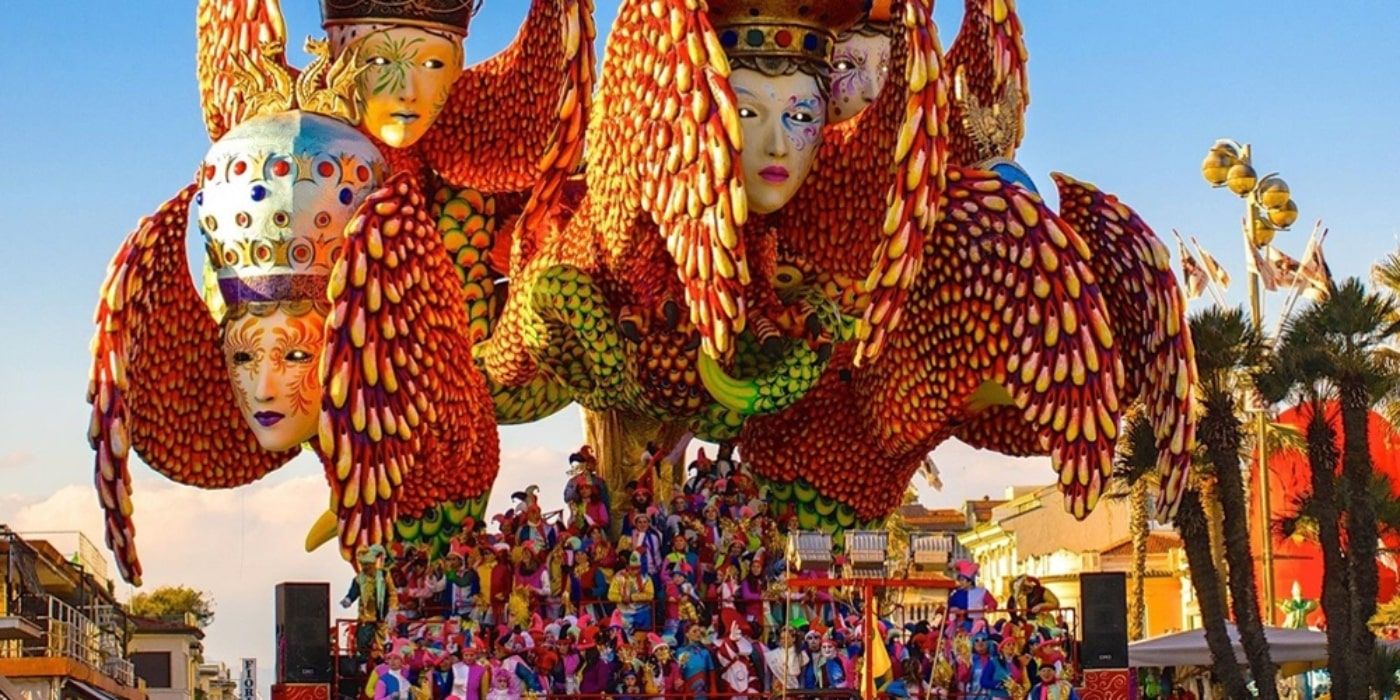Masks, confetti, allegorical floats: Carnival in Italy is a much-loved festival, involving adults and children at the same time. Visiting Italy at Carnival time is a real journey through the history and traditions of this magical festival.
There is not just one Carnival! From North to South, every Italian city or region has its own way of celebrating it. Which is the most epic or unmissable? Read on to find out the best destinations to visit Italy at Carnival.

Carnival in Northern Italy: from Venice to Sauris
Your journey through the Italian peninsula, "on the hunt for the most beautiful carnival", must necessarily begin with the famous Carnival of Venice, among the oldest in Italy: in fact, as early as 1296, an edict from the Senate of the Republic declared the Carnival of Venice a public holiday. And it was the Venetian carnival, perhaps more than any other, that enhanced the use of the masks: it is to be remembered, in particular, the costume of the Bauta consisting of a white mask called Larva, worn under a black tricorn, and by a dark coat, the so-called Tabarro.
Continuing north, we point out the Bagolino Carnival, in the province of Brescia. Here on Mondays and Shrove Tuesdays, the so-called balarì, (players and dancers) perform on the streets of the historic center with their characteristic costumes. Also worth mentioning are the maschèr, common citizens disguised as elders who will enjoy pulling the most unusual pranks.
The last Nordic stop is Sauris, in the province of Udine, where Carnival is celebrated in a truly unique way. In fact here, the main protagonists are the Rolar, a demonic mask that walks the public streets shaking the deafening bells and the "couple monarch", the Kheirar, which stana, house by house, the couples of the country duly masked to lead them in a dancing procession.
With the Venice Pass, you can treat yourself to a marvelous tour of the Serenissima's main attractions and an evocative gondola ride through the romantic canals. You will also benefit from fantastic discounts.
Discover moreVisiting Italy at Carnival in Central regions: Viareggio and Fano
Our carnival tour to the "center of the boot" can only begin with the Carnival of Viareggio, certainly among the most important in Italy, worthy of being able to compete with an international event like that of Rio de Janeiro. The main feature of the Viareggio Carnival are its allegorical floats which "target" the VIPs and the great current affairs. The Viareggio carnival has its roots back in 1873, when, thanks to a parade organized at the tables of the Casino Cafe, its glorious tradition began. Since then, apart from the forced breaks of the two wars, the Viareggio Carnival has never ceased to cheer us with its thousand colors and its fantastic masks. One above all, the mask symbol of Viareggio, Burlamacco, created by Uberto Bonetti in 1930.
Another unmissable stop in Central Italy is the Carnival of Fano, in the province of Pesaro and Urbino (Marche) which has the title of oldest carnival in Italy: 1347, its date of birth. The party program is characterized by the inevitable allegorical floats, masked parades, and spectacular fireworks. But the main peculiarity of the Carnival of Fano is the traditional jet, that is, the launch of chocolates and candies, which especially cheers the public of the little ones.
Carnival made in the south: from Putignano to Satriano di Lucania
For lovers of Carnival, Southern Italy also offers unmissable events. First of all, the characteristic Carnival of Montemarano, in the province of Avellino, where the masked parades take place "at the rhythm of tarantella" and are interspersed with the tasting of typical local products. The mask of Caporabballo is very unique, that is, in local dialect, the one who directs the dance.
Another unmissable stage of the Carnival made in the south, is the Carnival of Putignano, in the province of Bari, among the oldest in Italy, being born in the distant 1394. In addition to the usual allegorical floats, the following is to be mentioned: the typical traditional mask, the Farinella which it is also a tasty chickpea and barley soup; and the characteristic Carnival funeral held on Shrove Tuesday, which consists of the burning of a symbolic papier-mache pig.
The last stop on our carnival tour is Satriano di Lucania, in the province of Potenza, a village in the Lucano Apennine National Park. Here, the inhabitants, on the Sunday before Shrove Tuesday, disguise themselves as trees covered with ivy leaves and knock on the doors of the houses to announce the arrival of spring.
Among the stops for the Carnival in southern Italy should be mentioned Naples, where the Carnival was, historically, the scene of great festivities, especially in the Bourbon era. Today it is possible to relive the same atmosphere of that time, made of picturesque dresses and sumptuous masked balls, at the Eighteenth-century Neapolitan Carnival.
With the Naples Pass, you will explore and admire the main tourist attractions. Moreover, you can undertake exciting tours and excursions and benefit from fantastic discounts.
Discover Naples undergroundFurther information: Origins of Carnival

The etymology of the word Carnival is to be found in the Latin expression carnem levare-eliminate the meat with reference to the fasting of the Lenten period which usually follows this period.
The historical origins of the Carnival can be found in all those festivities of the ancient world, such as the Roman Saturnalia and the Greek Dionysiacs, for example, where the temporary subversion of normal social rules took place, expressed through masking, play and unbridled manifestations of lust and pleasure. In modern times, in Medicean Florence, it was traditional to organize large masquerades on floats, the so-called triumphs, with the accompaniment of the so-called carnival songs.
During the same period, in Papal Rome, there were singular horse races called barberi and the equally characteristic race of the moccoletti which consisted of running with burning butts in an attempt to extinguish them mutually.
In traditional Catholic countries, Carnival begins on the day after Epiphany or on the so-called Sunday of Septuagesima, or the first of the nine preceding Holy Week, and then ends on Shrove Tuesday, the Tuesday before Ash Wednesday.
About the author
Written on 15/12/2023



Francesco Paolo Colucci
Have you ever wanted to visit Italy at Carnival? From North to South, let's discover unmissable places and traditions to celebrate it.